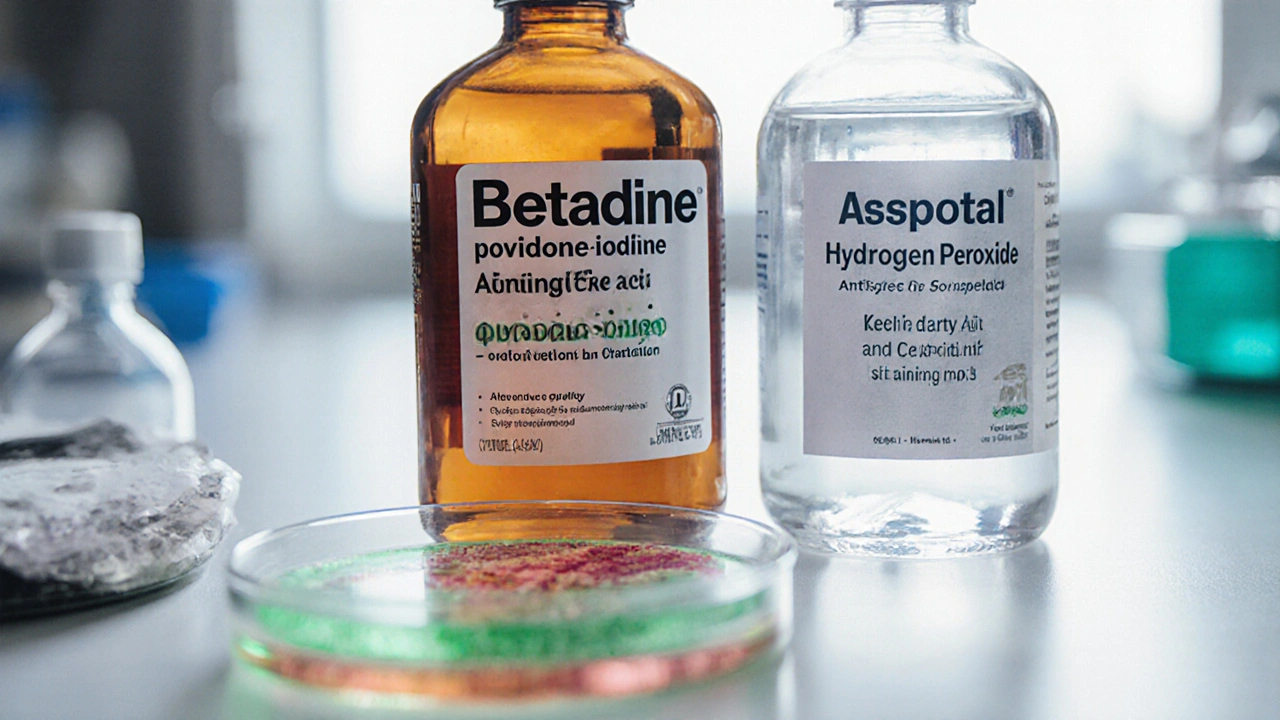When dealing with cuts, burns, or surgical sites, wound care antiseptics, topical agents applied to prevent or reduce infection in open skin injuries. Also known as antiseptic solutions, they work by killing bacteria, fungi, and viruses without harming the surrounding healthy tissue. wound care antiseptics are the first line of defense, especially when a quick, reliable clean is needed before dressing a wound.
One of the most trusted options is chlorhexidine, a broad‑spectrum antiseptic that sticks to skin and provides long‑lasting protection. It’s popular in hospitals because it stays active for hours, reducing the chance of re‑contamination. Chlorhexidine works well on minor abrasions and pre‑operative skin prep, but it can irritate deeper wounds or those with compromised skin integrity, so you’ll often see it paired with a gentle rinse.
Povidone‑iodine, an iodine‑based solution that releases free iodine to kill a wide range of microbes is another staple. It’s inexpensive, easy to find, and works fast against bacteria, viruses, and fungi. The trade‑off is that it can stain skin and may be toxic to healthy cells if used on large areas or for prolonged periods. For emergency first‑aid kits, povidone‑iodine is often the go‑to because it doesn’t need a prescription and is effective on both fresh cuts and burns.
Then there’s hydrogen peroxide, a bubbling agent that releases oxygen to mechanically lift debris and kill microbes. It’s great for flushing out dirt from a wound, but the oxidative burst can also damage new tissue, slowing healing if overused. Most clinicians recommend a single rinse followed by a milder antiseptic, especially for deep or chronic wounds.
Effective infection control, practices that prevent the spread of pathogens in wounds and surrounding skin isn’t just about picking the right chemical. You need to consider wound depth, exudate level, patient allergies, and the setting (home care vs. clinical). A clean, dry environment combined with an appropriate antiseptic can cut recovery time in half. For minor cuts, a dab of povidone‑iodine followed by a breathable dressing often does the trick. For surgical sites, chlorhexidine swabs are common because they stay active longer. And for stubborn debris, a quick hydrogen peroxide flush can clear the way for a gentler antiseptic to finish the job.
Now that you’ve got the basics – what each antiseptic does, when to use it, and how it fits into overall infection control – you’re ready to explore the detailed articles below. They dive deeper into dosage, contraindications, product reviews, and real‑world tips for every type of wound you might encounter.
Posted by
Paul Fletcher
15 Comments

A detailed side‑by‑side look at Betadine (povidone‑iodine) versus common antiseptic alternatives, covering effectiveness, safety, cost and best‑use scenarios.
read more